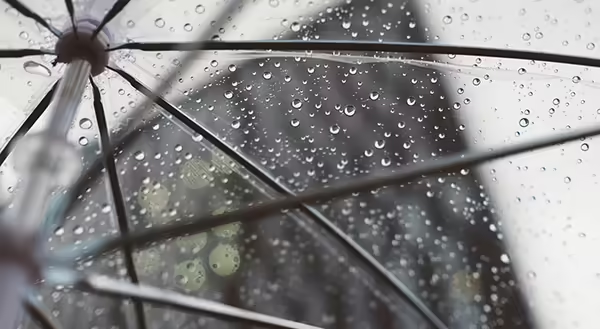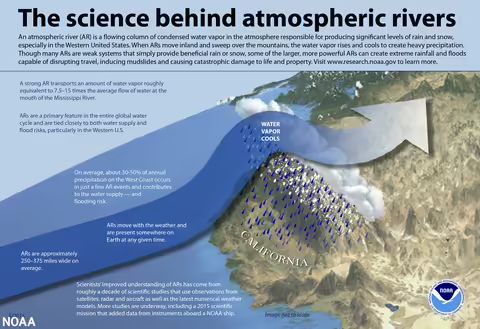
California has recently been slammed with extreme rainfall and snow in the high elevations, along with high winds. Media have attributed these events to an atmospheric river, but what does that mean?
What is an atmospheric river?
The ones that affect California occur when the polar jet stream splits over the Pacific Ocean, with part of it diving in a big U-shape down to near Hawaii. The same polar jet stream affects us in Illinois during the winter. As it dives south, huge amounts of water vapor are picked up from the warm water, and the vapor is moved toward the western part of North America, slamming into parts of central and southern California. This type of atmospheric river is also called the Pineapple Express.
Multiple low-pressure systems can form along the length of this atmospheric river which provides the energy to change the water vapor into rain and snow. In some cases, the low-pressure areas intensify strongly and quickly, creating what’s commonly called a Bomb Cyclone. Additionally, the moist air rising rapidly into the Coastal Mountains and Sierra Range intensifies precipitation.
While the very strong storms California has received in the past few weeks are not welcomed, weaker atmospheric rivers are beneficial to the central and southern parts of the state and provide most of the precipitation those areas receive.
The history of atmospheric rivers
These events are not new. From 1861 to 1862, the town of Sacramento was flooded for many months from what was likely one of these events. The rain from this event was almost continuous for 40 days. Talk about a rain of Biblical proportions!
If you go to Sacramento today, you can see where the buildings from that time have been almost covered over with fill dirt to raise the ground level next to the river.
The flooding in central California from 1861 to 1862 was not a one-time event. Geological research points to this type of megaflood occurring on average about every 200 years in recent history. Other research suggests these events may come more often in the future as the lower atmosphere warms.
Sources
- www.noaa.gov/stories/what-are-atmospheric-rivers
- phys.org/news/2022-08-catastrophic-california-megaflood-due-global.html
- cw3e.ucsd.edu/wp-content/uploads/2013/10/Dettinger_Ingram_sciam13.pdf
Photo source: National Oceanic and Atmospheric Administration
ABOUT THE BLOG: All About Weather explores the environment, climate, and weather topics for Illinois. Get in-depth information about things your weather app doesn't cover from summer droughts to shifting weather patterns. Never miss a new post! Sign up for our email list.
MEET THE AUTHOR: Duane Friend is the Illinois Master Naturalist Coordinator and Climate Specialist with University of Illinois Extension, serving the organization in many roles since 1993. Duane provides information and educational programs to adult and youth audiences in the areas of soil quality, weather and climate, energy conservation, and disaster preparedness. These programs provide practical solutions for families, farms, and communities. He assists families in creating a household emergency plan, farmers with the implementation of soil management and conservation practices, and local government officials and business owners with energy conservation techniques.
